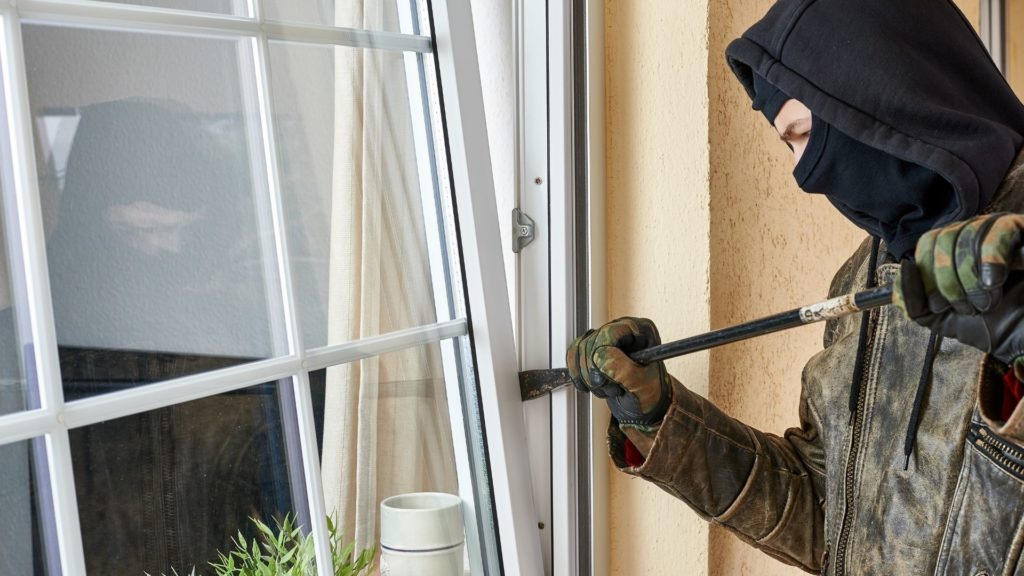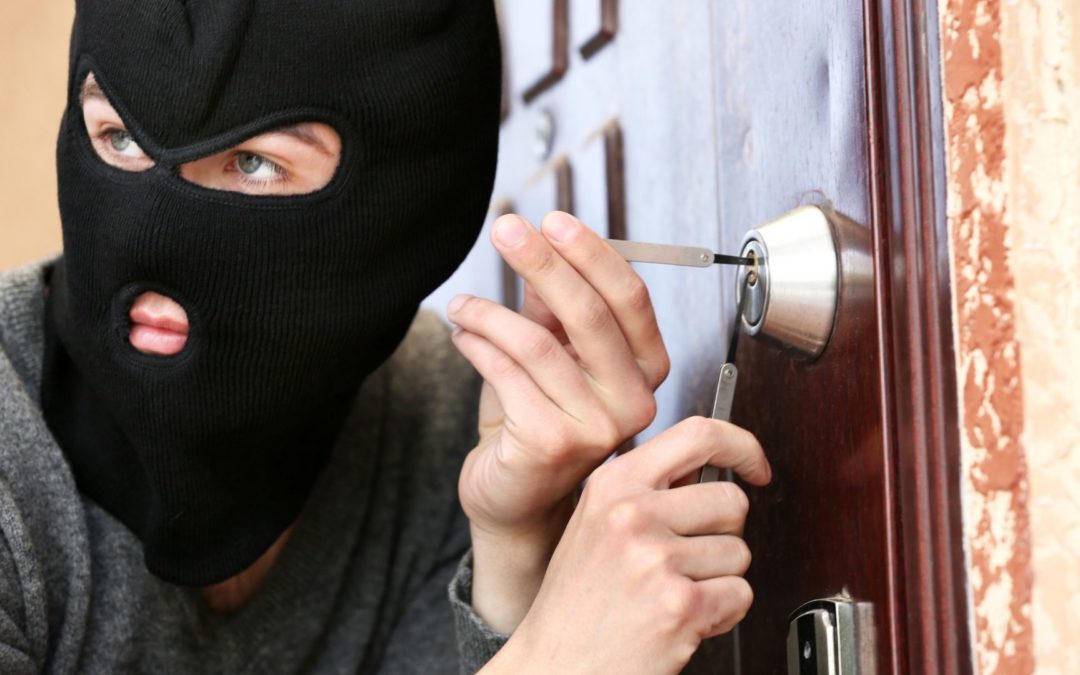Experiencing a break-in is a scary experience. No one wants to wake up to the sound of a breaking window or a splintering doorframe. While it’s not possible to predict burglary attempts before they happen, there are steps you can take to prevent thieves from getting in. One of the most important things you can do is secure your entry points.
What Are Entry Points?
Entry points are anywhere a burglar can get into your home. Windows and doors are the most common entry points. For that reason, your focus on burglar-proofing should begin with windows and doors. We’ll walk you through reinforcing these entry points.
How to Improve Window Security
Let’s start with windows. There are several ways you can make it harder for burglars to gain access through this entry point:
Replace Old Locks
Just locking your windows isn’t always enough. Old, flimsy locks aren’t helpful for burglar prevention. Remember, most burglars know how to break into poorly-secured windows. This is something they do frequently. Consider installing more secure options such as pin and wedge locks, which take longer to bypass. Burglars want to get in and out of your home quickly. The harder a lock is to get past, the more likely it is a burglar will give up and try another house.
Make Sure to Trim Trees Nearby
If you have trees beneath or near your windows, it’s an invitation for burglars to climb up. Make sure you don’t let tree branches grow close enough to windows for burglars to use a makeshift ladder. After all, letting your trees get to this point is doing burglars a favor. You’re saving them the hassle of bringing their own ladder and setting it up!
Install Lights Around Areas Below Windows
Burglars aren’t showy criminals. They don’t want to be seen or heard, meaning they stick to dark areas and make as little noise as possible. Installing lights around entry points is a huge deterrent for burglars. Floodlights are especially helpful because they come on suddenly, which might startle a burglar and cause them to leave immediately.
Plant Thorny Bushes Below Windows
A burglar will probably weigh the options between gaining entry and getting a body full of thorns. As we mentioned earlier, burglars rely on speed to avoid getting caught. The more challenges they face at entry points, the more likely they will give up.
Buy Window Break Sensors
Window break sensors set off an alarm when burglars try to enter. The sudden noise alone is enough to scare off a would-be thief. The minute the risk of getting caught surfaces, most burglars split. Window sensors are effective and easy to install, making them a great option for securing your home.
Invest in Security Film
Security film reinforces glass against burglars. Not all burglars try the locks on the windows. It’s faster to smash through the glass. Security film—made of polyester layers—makes it harder to do that. If this option doesn’t appeal to you, you can invest in triple-glazed or tempered glass for your windows instead. These materials wouldn’t need security film.

How to Improve Door Security
Ready to make sure no burglars get through your front door? We’re ready to teach you. Here are five ways to improve door security:
1. Get a Deadbolt
One-cylinder deadbolt locks require a key to open it from the outside and a sliding mechanism to open it from the inside. High-quality deadbolts enhance the security of existing locks, and they make it hard to kick in the door. You can get two-cylinder deadbolts that require a key for opening from both the inside and outside, but these are not emergency-friendly. If you lost the key and the house was on fire, you wouldn’t be able to get out through the front door. It’s best not to trade one security risk for another. We suggest a one-cylinder deadbolt.
2. Check Your Strike Plate
The strike plate—attached to your door jamb—holds the bolt of a lock when the door closes. The screws holding your strike plate should be three inches long. Additionally, you should make sure your strike plate is high-quality. Thin strike plates made of reinforced plastic aren’t secure. A weak strike plate makes it easier for burglars to kick the door open. Not sure if you should replace this important security element? Examine the material and determine if it’s thick enough to hold its own against a forced entrance. Also, check if the strike plate is fitted correctly; if it’s loose or crooked, you’ll need to adjust it. Still can’t tell whether you should replace this part of your door after inspecting it? Call a professional locksmith and have them take a look.
3. Reinforce Door Hinges
Weak door hinges make it easier to break into a home. First, check if the screws holding your door hinges are the appropriate length. Anything less than two-and-a-half inches isn’t safe. Go ahead and replace your screws if they aren’t long enough. If your door swings outward, install hinge bolts. Hinge bolts prevent burglars from pulling out your door by removing the hinge pins.
4. Check Your Door Jambs
A weak door jamb makes it easier to kick or pound this entry point open. For a truly secure door, you want strong locks and structure. Reinforcing your door jambs is easy. You can find a DIY kit at your local hardware store.
5. Reinforce Lock From Inside
Door reinforcement locks add an extra layer of security to your door. They can only be locked or unlocked from inside, making them tamper-proof. Most of them are manufactured to withstand great amounts of force, meaning they should also make your door hard to force open. They’re also easy to install. You can pick one up from your local hardware store if you’re up for a DIY project.
We Can Help Protect Your Home’s Entry Points!
Need to strengthen your home’s entry points? Our professionals at ASAP Locksmith understand how important home security is for the safety of you and your family. We can help you increase the security of your home while staying within your budget. Contact us today for more information!

